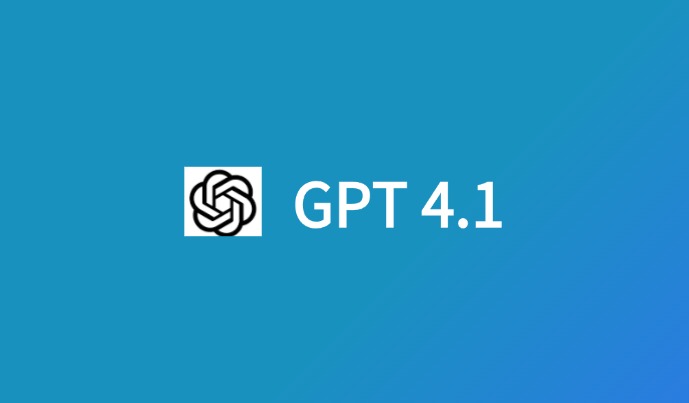Summarizing a book, article, or research paper can often feel overwhelming, especially when dealing with long, dense, or highly technical content. The traditional method of summarization can take hours of careful reading, note-taking, and analysis. Fortunately, with the advent of artificial intelligence (AI), this process has become faster, more efficient, and more accessible to people in various fields, including students, researchers, and professionals. AI summarization tools are now widely available, capable of extracting the most important ideas from complex texts in just a few minutes. This guide will explore five effective strategies for using AI to summarize a book, article, or research paper, highlight key tools—including iWeaver’s Book Summarizer—and provide a deeper understanding of how these tools can be most effectively utilized.
What is AI-Based Summarization?
AI-based summarization refers to the use of advanced algorithms and natural language processing (NLP) models to condense large blocks of text into concise, coherent summaries. These tools aim to preserve the main ideas while eliminating unnecessary details. AI can simplify the summarization process for books, scholarly articles, or research papers by providing summaries that are both accurate and easy to digest. Broadly speaking, AI summarization can be divided into two main approaches:

Extractive Summarization:
In extractive summarization, the AI selects and extracts key sentences or phrases directly from the original text. These selections are based on various factors like relevance, importance, frequency, and sentence structure. The result is a summary that closely mirrors the source text but condensed into a more manageable length. The main strength of extractive summarization is its ability to provide a verbatim copy of key segments, preserving the exact wording and context.
Abstractive Summarization:
Abstractive summarization takes it a step further by generating new sentences that convey the main points in a more concise manner. This method uses advanced machine learning models to paraphrase and rewrite the text. It often provides a more polished and readable summary compared to extractive methods. However, the process can sometimes result in the loss of specific details or nuances, especially in technical or complex content.
While both methods have their advantages, your choice will depend on whether you prefer a summary that closely resembles the original text (extractive) or a more refined, coherent summary (abstractive).
5 Steps to Summarize a Book with AI
AI summarization tools are designed to simplify and speed up the process of condensing a book’s content. Below is a detailed step-by-step guide on how to use AI to summarize a book effectively:
Step 1: Pick the Right AI Summarization Tool
Selecting the right AI summarization tool is crucial to ensure that you get the best results. There are various tools available, ranging from simple, free platforms to advanced, paid solutions. Here are a few top choices:
- iWeaver’s Book Summarizer: A standout choice for book lovers and researchers, iWeaver’s Book Summarizer is an excellent tool for summarizing e-books and printed content. This tool provides customized summaries, including detailed or concise overviews, based on user needs.
- OpenAI’s GPT (Generative Pretrained Transformer): A powerful language model that excels at both extractive and abstractive summarization of books and research papers. GPT can understand complex texts and generate accurate summaries that capture the essence of the content.
- QuillBot: While primarily known for paraphrasing, QuillBot also offers solid summarization capabilities. It’s a user-friendly tool that provides both extractive and paraphrased summaries.
- SMMRY: This is a simple and free tool that generates quick, extractive summaries of various types of documents. It’s especially useful for those looking for fast and straightforward summaries.
| Tool Name | Type | Advantages | Ideal Use Case | Pricing |
|---|---|---|---|---|
| iWeaver’s Book Summarizer | AI Book Summarizer | Highly customizable, suitable for long texts | Ideal for novels, eBooks, research papers, supports file uploads | Paid (Free trial available) |
| OpenAI’s GPT | Generative Model | Powerful language generation capabilities, supports abstractive summarization | Suitable for long-form articles, academic papers, blog content | Pay-per-use |
| QuillBot | Paraphrasing & Summarization Tool | User-friendly, extracts key sentences & paragraphs | Suitable for academic papers, reports | Free and Paid Versions |
| SMMRY | Summarization Tool | Simple, free, quickly generates extractive summaries | Ideal for quickly summarizing articles or news reports | Free |
For the best results, consider a tool like AI Book Summarizer, which is specifically designed for summarizing books and offers tailored summaries with minimal user input.
Step 2: Upload or Input the Text
Once you’ve chosen your summarization tool, the next step is to input the content of the book you want to summarize. For digital books (e.g., PDFs, EPUBs), you can easily upload the file into the tool. If you’re working with physical books, you’ll need to use optical character recognition (OCR) software to scan the pages and convert them into text. Tools like iWeaver’s Book Summarizer support seamless uploads, making it easy to handle both e-books and research papers.

Step 3: Customize Your Summary
Different summarization tools allow you to fine-tune the summary based on your preferences. You can typically customize the following settings:
- Summary Length: Choose the desired length of the summary. This could be a short summary (e.g., a few sentences) or a more detailed one (e.g., 500 words). For a more in-depth summary, you can set the length to accommodate a broader range of information.
- Detail Level: Decide how detailed you want the summary to be. You can opt for a high-level overview or a more specific breakdown of key points. Some tools, like iWeaver, even allow you to adjust the detail level to ensure the summary meets your exact needs.
By adjusting these settings, you can ensure that the summary is aligned with your objectives, whether it’s for a quick review or a more thorough analysis.
Step 4: Review the Output
Once the summary is generated, it’s important to review the output. AI-generated summaries are not always perfect, and some sections might require editing or clarification. Check the summary for accuracy, coherence, and relevance. If the AI has missed any key points or if the summary lacks clarity, you can manually edit the content to fill in the gaps.
Step 5: Refine as Needed
AI summaries are great for saving time, but they might not capture every nuance of the original text, especially in more complex or creative works. If the text includes sophisticated arguments or themes, consider refining the AI-generated summary by adding insights or rewording specific sections. This step ensures that the final summary is both concise and comprehensive, preserving the main points while also reflecting your understanding.
Why Use AI for Summarization?
AI summarization offers a number of compelling benefits that make it an invaluable tool for anyone dealing with large amounts of text:
Time-Saving
One of the biggest advantages of AI summarization is how quickly it can condense a long text. A 300-page book can be summarized in just minutes, saving hours of reading time.
Efficiency
AI can process and summarize multiple documents at once. Whether you’re a researcher, student, or professional, AI helps you handle large volumes of text efficiently, allowing you to focus on analysis and decision-making.
Versatility
AI summarization tools can handle a wide variety of content types, from novels to academic research papers and technical reports. This versatility makes AI summarization a useful tool across different fields and industries.
Benefits of AI Summarization
Increased Productivity
By automating the summarization process, AI frees up time for other critical tasks. Instead of spending hours reading and summarizing, you can use AI to quickly generate the essential ideas, leaving you with more time for deeper analysis and decision-making.
Consistent Results
AI summarization tools ensure that summaries are consistent in structure and content. Whether you’re working on multiple projects or summarizing several chapters of a book, AI delivers a uniform and structured summary every time.
Accessibility
AI makes complex texts more accessible to a wider audience, including non-experts. Whether you’re summarizing a scientific research paper or a historical book, AI can simplify difficult content, making it more digestible for people without specialized knowledge.
Focus on Core Ideas
AI summarization tools are designed to focus on the key points and main ideas of a text. This ensures that you don’t miss the most critical insights, even in a lengthy or technical document.
Drawbacks of AI Summarization
Lack of Deep Understanding
Although AI can extract key information efficiently, it does not always understand the context in the same way a human does. This means that subtle themes, nuances, or complex arguments might be overlooked or misinterpreted.
Potential Errors
AI-generated summaries are only as accurate as the algorithms and data behind them. Misinterpretations or errors can occur, especially if the AI tool has not been properly trained on the specific type of content.
Limited Creativity
When summarizing creative works, such as novels or poetry, AI may struggle to capture the deeper meanings, symbolism, and emotional tone present in the text.
Conclusion: Is AI Summarization Right for You?
AI summarization offers tremendous benefits for quickly extracting key ideas from books, articles, and research papers. Tools like iWeaver’s Book Summarizer streamline the summarization process, enabling users to get concise and relevant summaries with minimal effort. However, for highly complex or creative texts, it’s important to complement AI-generated summaries with your own insights or human expertise to ensure that no critical information is missed.
By incorporating AI into your summarization process, you can save time, increase efficiency, and improve productivity, allowing you to focus on the most important aspects of the content you are working with. Whether you’re summarizing an academic article, a business report, or a novel, AI can help you stay on top of your reading and maximize your understanding of even the most intricate texts.



